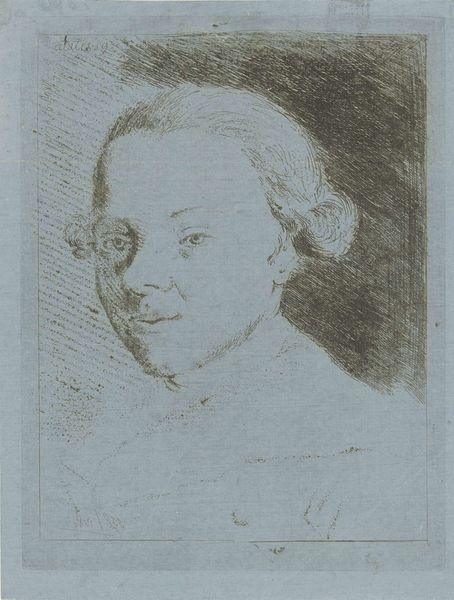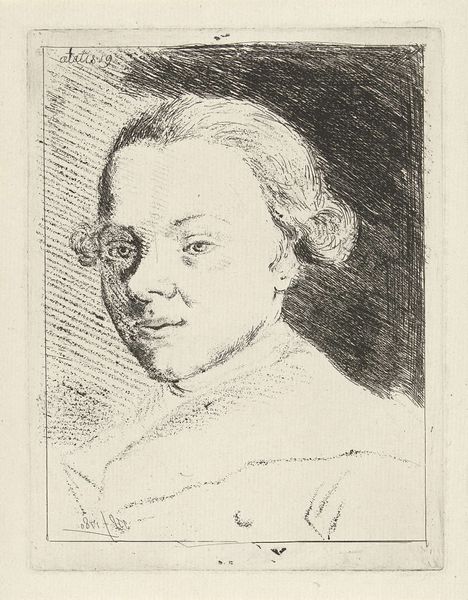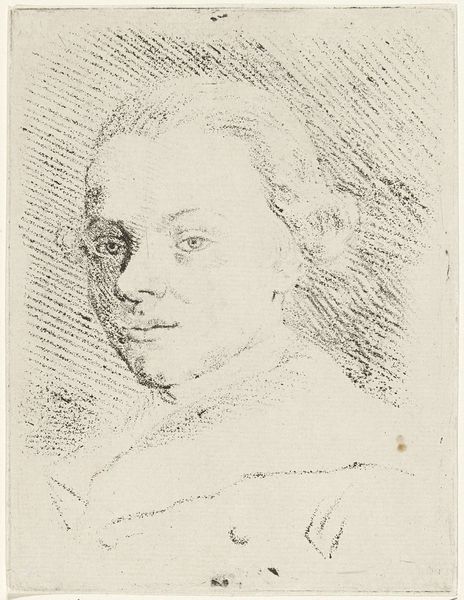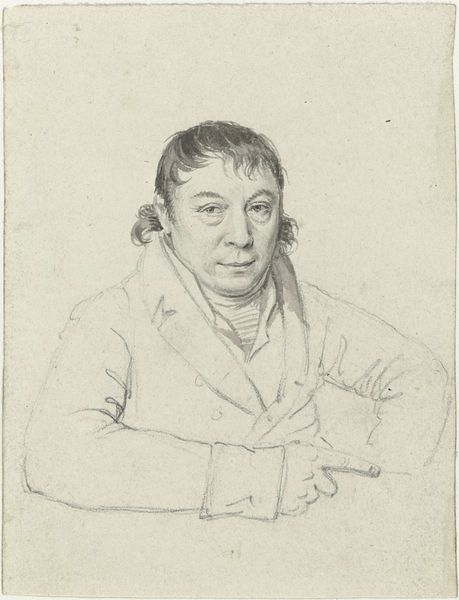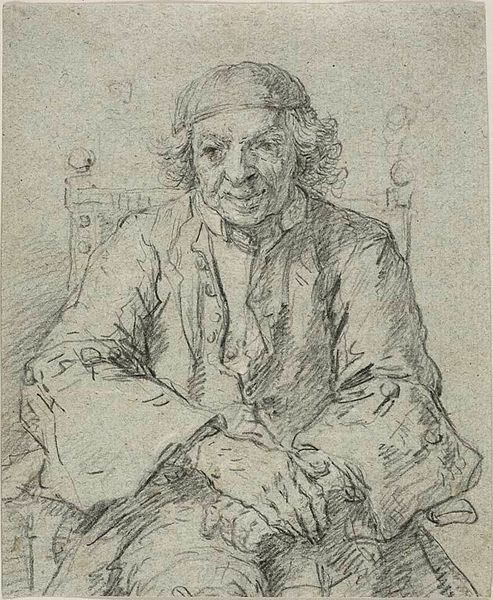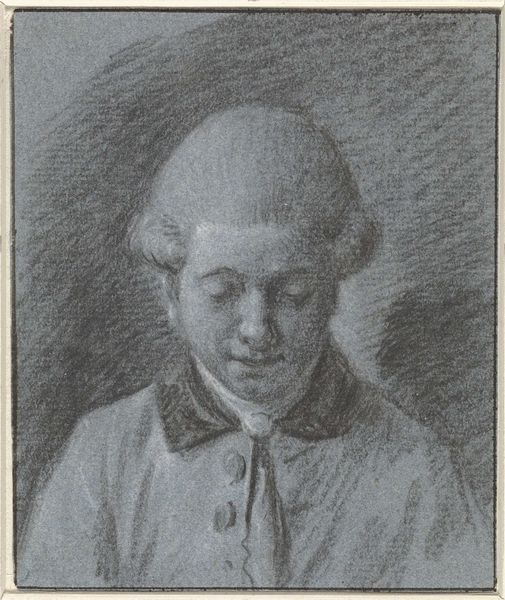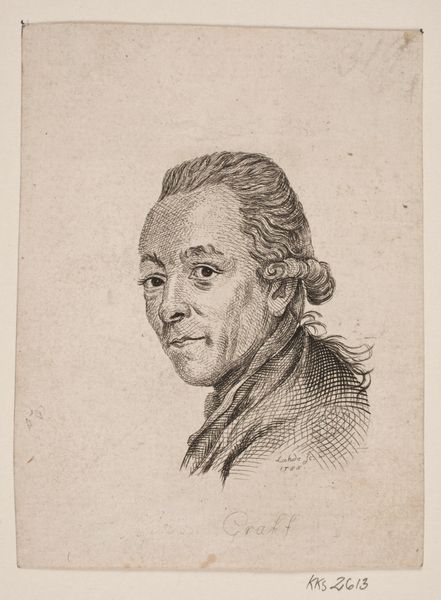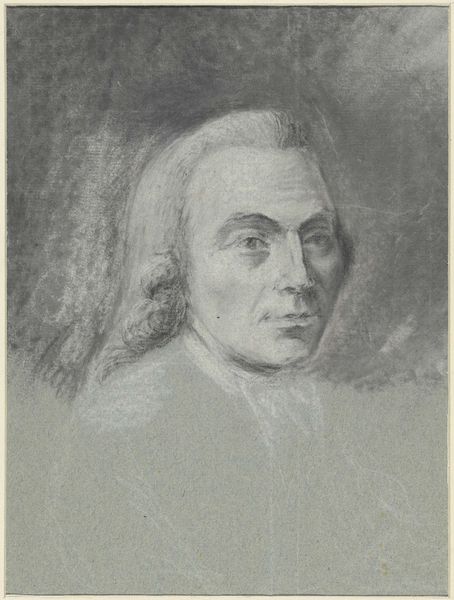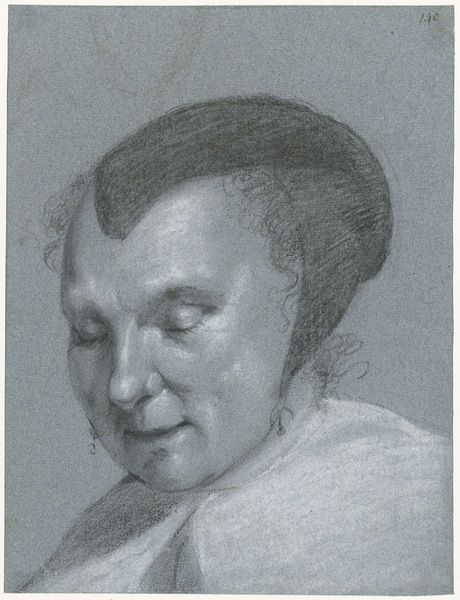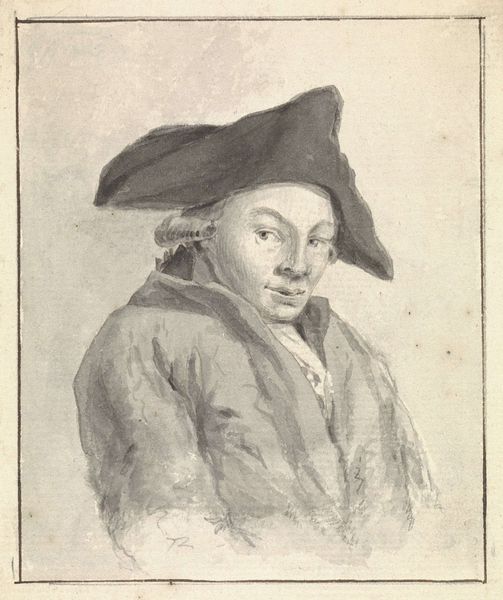
Portret van de tekenaar Dirk Versteegh op 21-jarige leeftijd 1752 - 1819
0:00
0:00
jurriaanandriessen
Rijksmuseum
Dimensions: height 245 mm, width 207 mm
Copyright: Rijks Museum: Open Domain
Editor: So, here we have Jurriaan Andriessen's "Portrait of the Draftsman Dirk Versteegh at age 21," created sometime between 1752 and 1819. It's a drawing rendered in charcoal and graphite. There’s a gentle, almost amused, expression that the artist has captured. What kind of stories can we find in the image itself? Curator: It’s fascinating how a seemingly straightforward portrait can become a repository of cultural memory. The powdered wig, the cut of the coat - these are potent symbols of a specific social class and time period. Do you see how Andriessen uses light and shadow to almost…animate Versteegh’s expression? Editor: Yes, the shading around his mouth really emphasizes his smile. It's not a formal, posed smile, but a genuine one. Curator: Exactly! Consider that smile not just as an expression, but as a carefully constructed symbol. What does that tell us about Versteegh himself, and what message was Andriessen trying to convey about the subject's inner character? How does this portrait participate in or push against conventions of its time? Editor: Maybe he’s suggesting Versteegh is an approachable artist, breaking down barriers. Curator: It's a wonderful suggestion. Artists would often imbue sitters with symbolic attributes—an open book signifying learning, for instance. I wonder what emotional meaning could be derived from Versteegh’s gaze as he looks slightly away from us. Does that communicate an inclination to the world, and perhaps from within it? Editor: Hmm, that adds a new layer of depth. Thank you. Curator: Absolutely, it reminds us that images are never neutral, and are rich vessels filled with historical and emotional meaning.
Comments
No comments
Be the first to comment and join the conversation on the ultimate creative platform.
